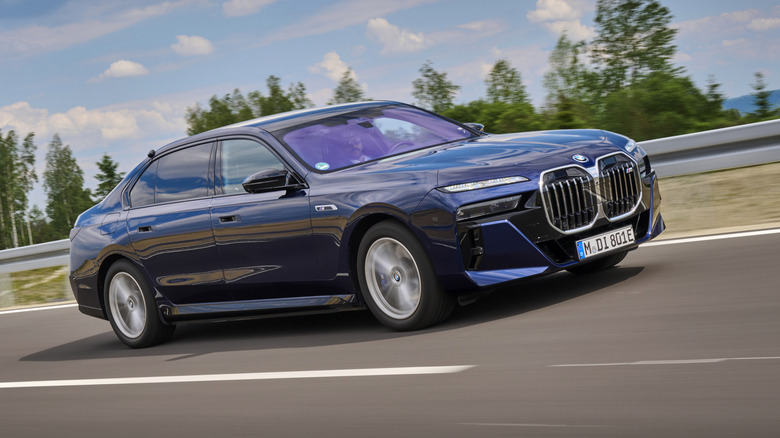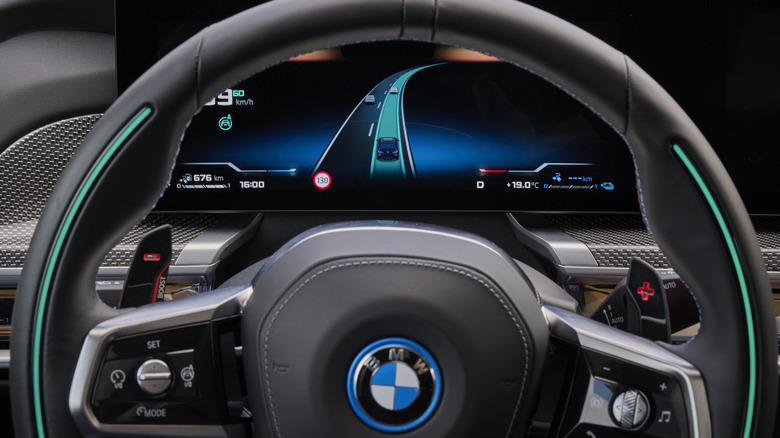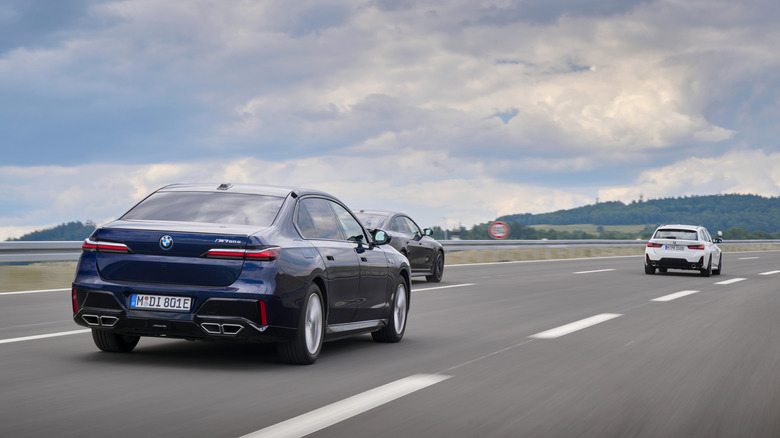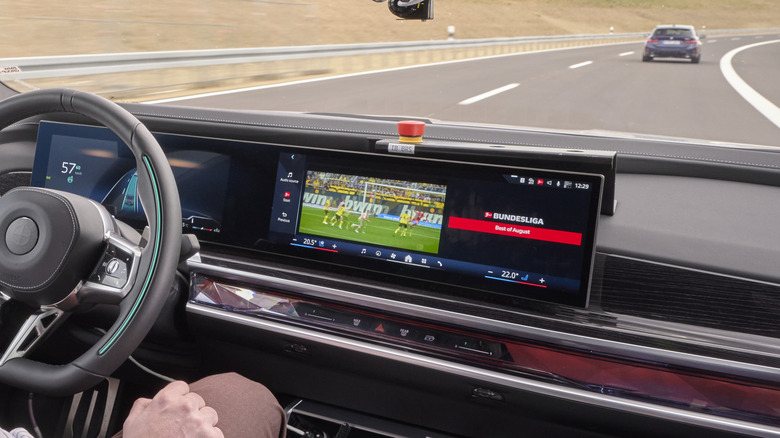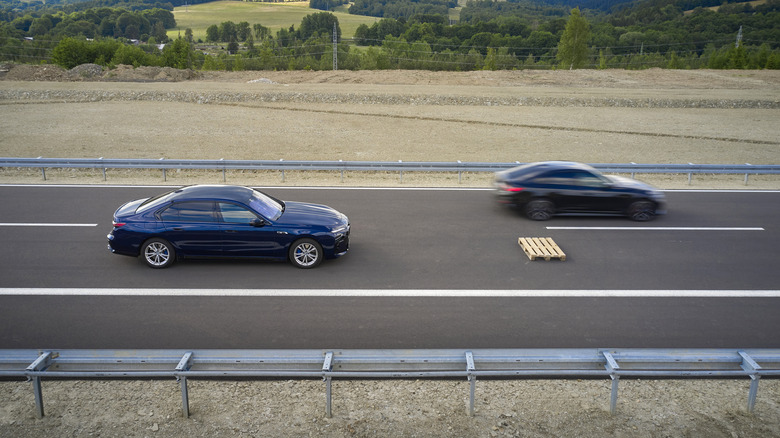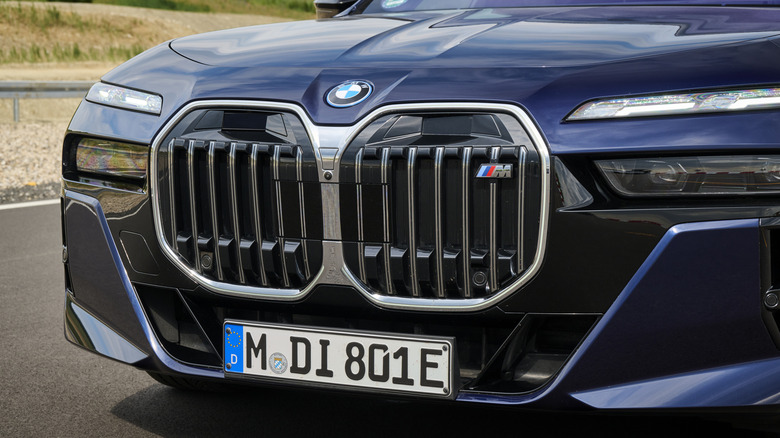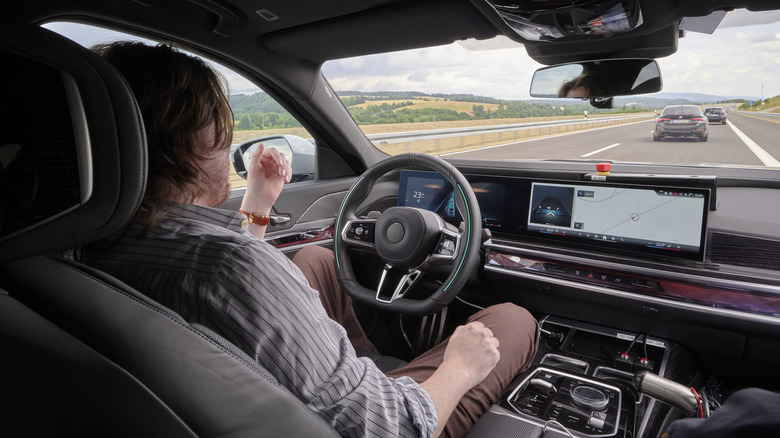BMW Is Going To Sell A Real Self-Driving Car, And We Tried It Out
A few weeks ago, we found ourselves sat behind the wheel of a BMW M760e on a specially built 6 km stretch of motorway the company has laid at its "Future Mobility Development Center" in Sokolov, Czecha. While the motorway loop could be used to test things like how a vehicle handles at speed, its milage at highway pace, or its stopping distance, we weren't doing any of that. In fact, we weren't even driving.
Instead, we were previewing BMW's Level 3 self driving technology. While it isn't totally autonomous, it allows the vehicle to take control under certain circumstances. When Level-3 is activated, you don't need to pay attention to the road or keep your hands on the wheel. You can instead focus on other things. Like watching a very popular music video, or checking your emails. While the latest leap forward is significant, it is worth noting that we haven't got fully autonomous vehicles yet. So expect to do some work before taking your hands off the wheel. And as with anything new, there are some kinks that need working out. Here's what we found during our lap on BMW's private autobahn.
Toggling the system is easy, when you get used to it
BMW's self-driving system has a few conditions that must be met before it'll activate, but once you're used to it going to Level 3 is as easy as a button press. For instance, you'll need to stay in one lane of a highway and be traveling at under 60km/h (37 MPH) for a period of time. Your eyes will need to be on the road, and your hands will need to be on the wheel. When the car has decided that its conditions have been met — including that you're in the midst of dense highway traffic — you'll be invited to tap a new button on the steering wheel. This activates level three self-driving and allows you to take a break from the road while still making progress.
So, we did have to do a little bit of driving at first, to set off in the car and get it up to highway speed. Eventually though, we hit "traffic" (simulated by other BMW test drivers) and had to slow down to around 40 km/h. When the BMW notices you're stuck in slow-moving traffic, it will offer to step in and take over. Accept this offer, and you can essentially skip one of the most tedious situations a driver can end up in.
There were a couple of bugs
At the time of testing, there were a couple of quirks in the system that will hopefully be ironed out by launch. The first relates to a particular, and popular, brand of sunglasses. One of the boxes the system needs to check before taking over involves the driver having his or her eyes on the road. It's a bit of an odd check, considering you can put your eyes wherever you like once Level-3 has kicked in, but as things stand it's one of the safety precautions BMW feels is necessary.
Unfortunately, if you're wearing a pair of Ray -Bans, the sensor can't detect your eyes and the Level 3 system won't engage. According to BMW's staff, this issue is particular to that one brand of Italian sunglasses, and you shouldn't have an issue with other sets of shades. It's probably worth mentioning that the Ray-Bans causing the issue weren't polarized, but are apparently capable of filtering out 85% of light. If the bug isn't fixed, you can get around it by ditching the glasses until the car takes over.
Other journalists mentioned that during their time at the wheel the BMW had some issues recognizing road signs, but this wasn't something we encountered ourselves. Given that the launch is a few months away, there's every chance this could be ironed out by the time the system goes live. It's also pretty much guaranteed they'll be gone before this level of self driving even gets close to becoming a mainstream feature.
We're living in the age of infotainment
What use is a system which allows you to take your hands off the wheel and your eyes off the road if you're just left staring blankly at the dashboard? BMW realizes this, and seems to have finally given drivers access to the entertainment systems passengers riding in the back of its luxury models have enjoyed for a while now.
Once the system is engaged, drivers will be able to look at the vehicle's central screen and choose an app to help keep them entertained. YouTube is one of the titles on offer, and if your vehicle has a SIM card installed it will have full access to the site's video library. If the world's most popular streaming site isn't your thing, then BMW has more to offer. One of the better apps comes from a deal the company has made with the Bundesliga. You can watch highlights or even full games from Germany's top soccer league. The company has also promised there is more to come in the way of infotainment, so expect this particular set of features to steadily grow alongside self-driving technology.
It will keep you safe from random road hazards
After we got up to speed and the system was engaged, it spent a lot of its time reacting to two other drivers on BMW's test motorway. The drivers were there to act erratically, and the car handled it like a more advanced version of radar-guided cruise control. It backed off when needed, and sped up when it could. It anticipated a driver cutting us off, and was happy to take its time when the car in front of us had slowed to a crawl. When the two other vehicles eventually went on their way, things got even more interesting.
During the demonstration drive, BMW's staff managed to catch us by surprise. While we were happily watching some Bundesliga highlights, the car performed an emergency stop. It appeared someone had left a large box right in the middle of our lane, which the lidar picked up and subsequently stopped us hitting. According to BMW, the box was representative of something that had fallen off the back of a truck. Obviously it's more difficult to stage an actual falling object, but there's a good chance the car will react in a similar way if it notices something barreling towards it.
Understandably, plenty of people remain skeptical about the increasing autonomy we're seeing in electric vehicles. It's difficult to trust a bit of software with your life, and it's unlikely you'll be as comfortable watching YouTube on an actual motorway as we were in what was a controlled environment. But it is nice to know that the car probably won't kill you if you do choose to look away.
Unfortunately, it's not something that you can retrofit
If you've just dropped more than $150,000 o something like a specced out BMW i7, and think all of this sounds amazing, we have some bad news. You'll need to purchase a completely new vehicle, with what is likely to be a very pricey optional extra, if you want to actually take advantage of BMW's upcoming Level 3 offering. As things stand, we don't have any exact pricing on the system — but we do know that it can't be retrofitted, and is not coming as standard. So, unless you stump up when you're buying the vehicle new, it's never going to drive itself while you retreat into a YouTube hole.
If a lack of Level 3 is a deal breaker, then you're better off hanging onto your money for now. How long you'll have to hold on to said money depends on where you live. If you're residing in BMW's homeland, then you may be able to slap a deposit down before you know it. If you're on the other side of the Atlantic, though, then you could be in for a bit of a wait. Especially if your state isn't expressly allowing Level 3 self driving vehicles.
It will only be available in Germany, for now
The feature is set to launch in Germany this December, with select 2024-model-year BMWs capable of using it. As with many of BMW's driver assistance tools, it will automatically disable itself outside of specific geographic regions. Currently, there is no U.S. release date for BMW's Level 3 system, and when it does make it stateside you're unlikely to be able to use it everywhere. Currently, laws relating to self-driving cars differ massively from state to state
If you can't wait for this kind of system, then Mercedes has a similar offering and has confirmed its Level 3 system will be coming to California and Nevada. Mercedes' system has its own restrictions — it can only be enabled on pre-mapped routes and will be disabled if the weather gets too rough. But it is progress, and two states approving the tech for use on the roads is a positive step — for Mercedes, BMW, and every other car company looking at self-driving technology.
While vehicles are still a long way from "Level 5" and the full autonomy it promises, legislation is arguably a larger hurdle than any technological barrier. Safe use of these systems in places like Germany, Nevada, and California will likely give more localities a reason to greenlight self-driving systems. But the chances are, many of us are in for a long wait when it comes to BMW's Level 3 system and self driving cars as a whole.
